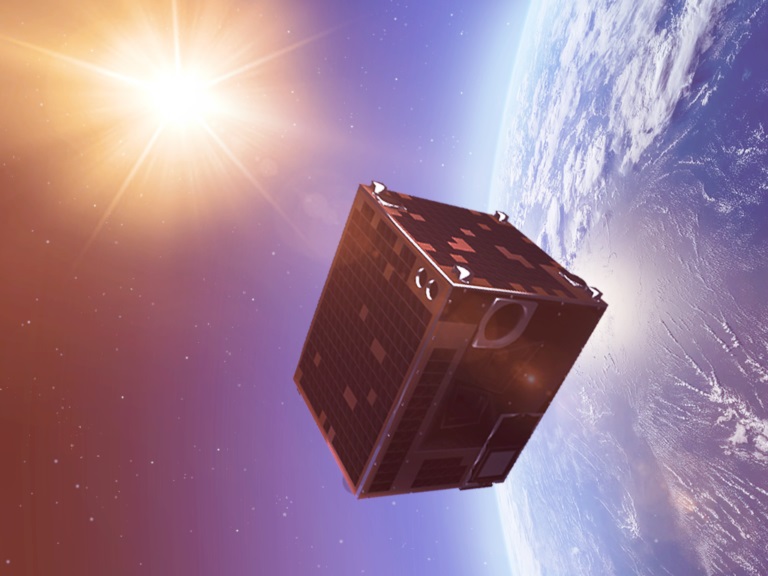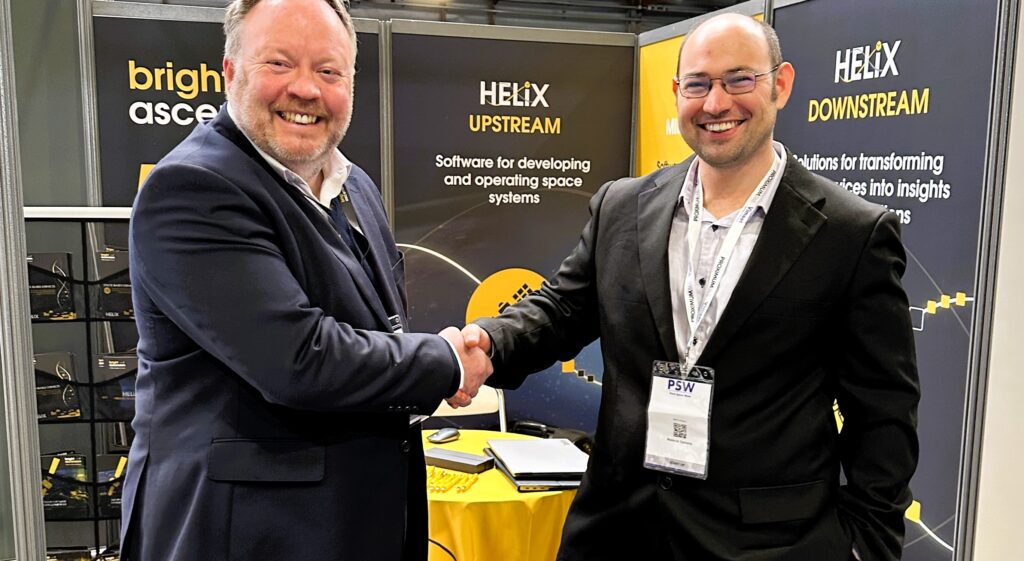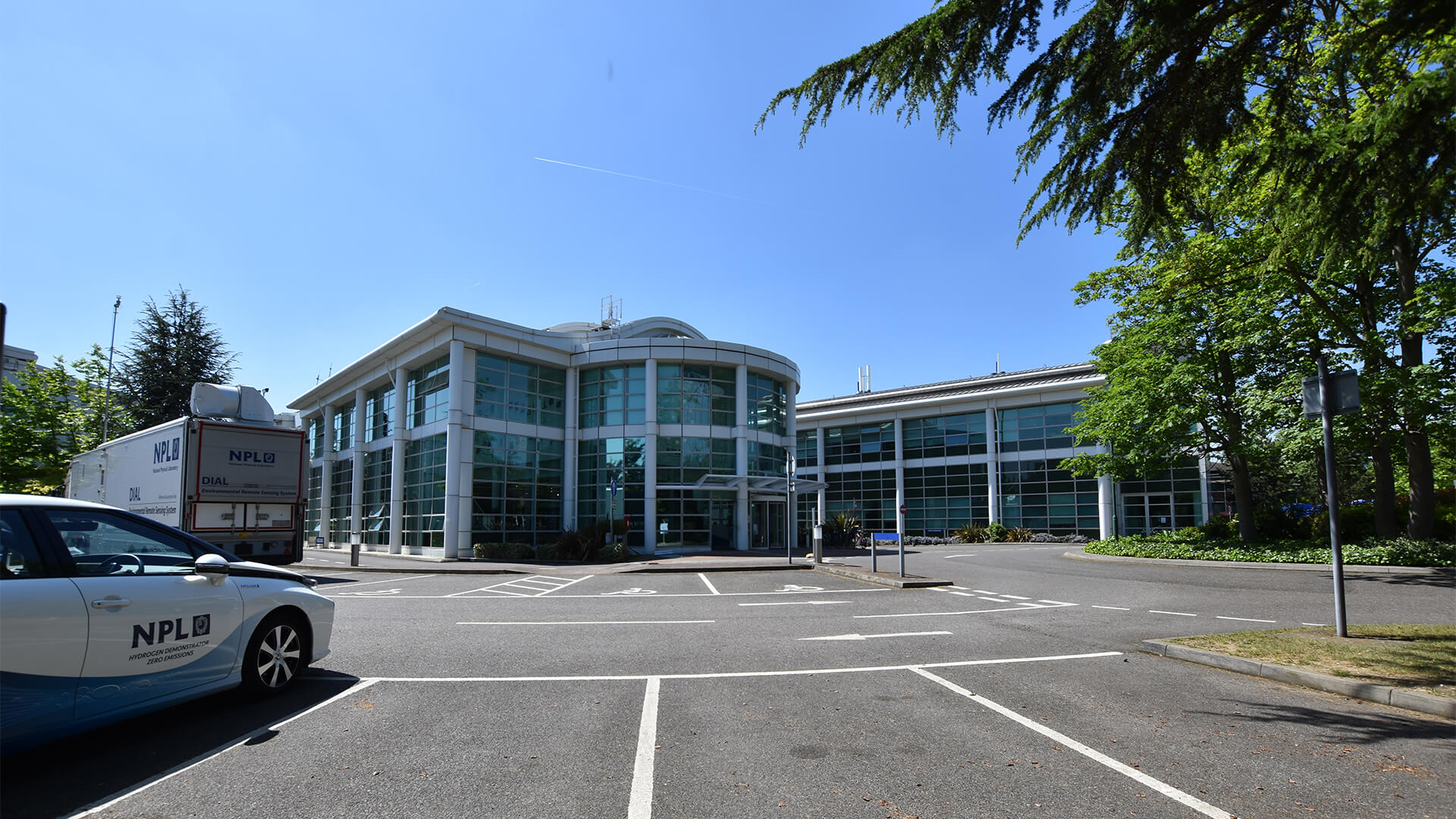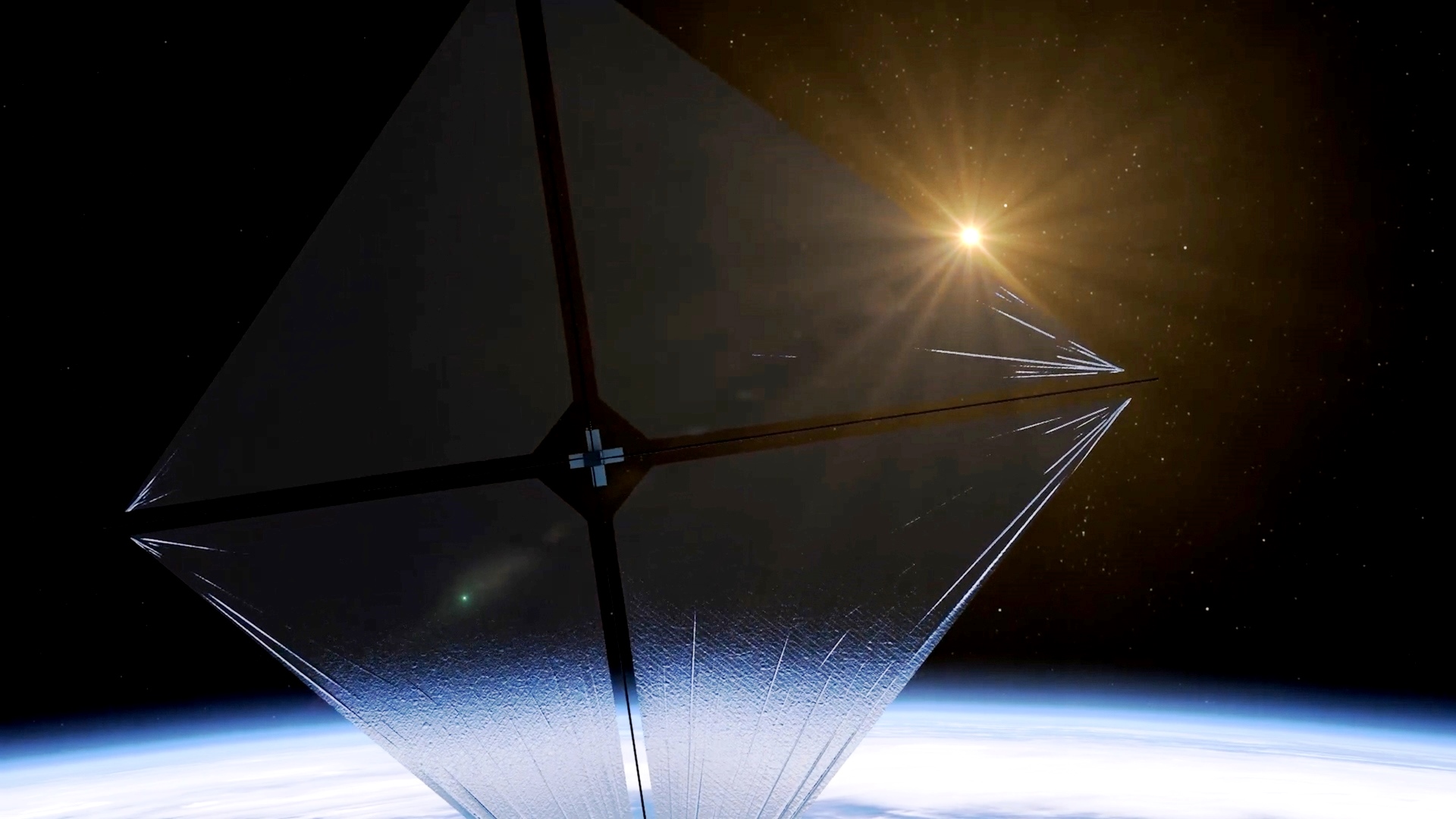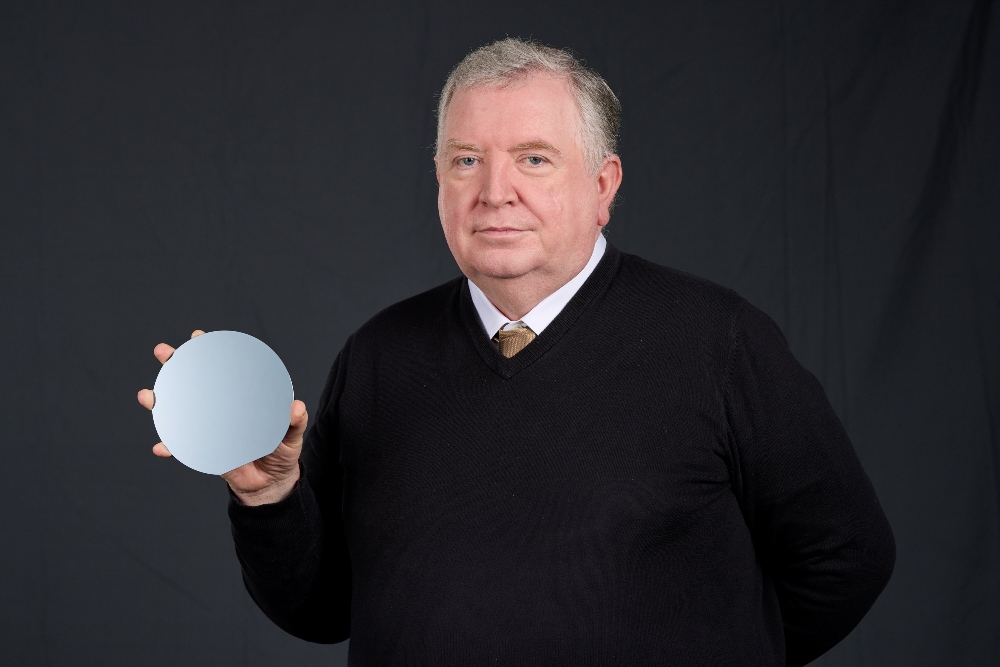RemoveDEBRIS spacecraft launched from ISS

Courtesy NASA Nanoracks
RemoveDEBRIS will demonstrate a range of innovative technologies to clean up space debris, with the first Airbus designed and built experiment due for deployment in October 2018.
The spacecraft features three Airbus technologies to perform Active Debris Removal (ADR): a net and a harpoon to capture debris, and also a Vision Based Navigation (VBN) system to develop rendezvous techniques in orbit with space debris. The spacecraft itself was designed and built by Airbus subsidiary Surrey Satellite Technology Limited (SSTL) and also includes a drag sail to speed up deorbiting of the whole mission.
Courtesy NASA Nanoracks
The mission timelines will see the net deployed in October this year, followed by the VBN test in late December and then the harpoon in February 2019. The experiments will all be carried out below the orbit of the ISS.
The net experiment, developed by Airbus in Bremen, will see a cubesat deployed from the main mission craft. When the cubesat is 5 metres away, it will then be targeted by the net and captured at approximately 7 metres before it floats away to deorbit.
The VBN system from Airbus in Toulouse will test 2D cameras and a 3D LIDAR (light detection and ranging) technology supplied by CSEM to track a second cubesat deployed from the main spacecraft. The VBN system will track its rotation and movement away from the main spacecraft. At the same time the cubesat will transmit its true position to the main spacecraft, enabling the performance of the VBN to be measured. This cubesat will then float and deorbit naturally.
The Airbus Stevenage designed harpoon will see a 1.5 metre boom deployed from the main spacecraft with a piece of composite panel on the end. The harpoon will be fired at 20 metres/sec to penetrate the target and demonstrate the ability of a harpoon to capture debris.
Courtesy NASA Nanoracks
Nicolas Chamussy, Head of Airbus Space Systems said: “We have spent many years developing innovative active debris removal systems to be at the forefront of tackling this growing problem of space debris and to contribute to the UNs’ Sustainable Development Goals for our future generations. We will continue to work closely with teams across the world to make our expertise available to help solve this issue.”
After completion of the Airbus designed ADR, the main spacecraft will deploy the drag sail developed by SSC which will deorbit the craft in approximately 8 weeks. Without the drag sail, deorbiting would take more than 2.5 years.
Co-funded by the European Commission under FP7, RemoveDEBRIS is an international collaboration between the University of Surrey, Airbus, ArianeGroup, Surrey Satellite Technology Ltd, Innovative Solutions In Space, CSEM (Switzerland), Inria (France) and Stellenbosch University.
Professor Guglielmo Aglietti, Director of the Surrey Space Centre at the University of Surrey and Principal Investigator for the mission, said: “After almost five years of development, it is exciting to finally be in a position where we can test these technologies in the field. If successful, the technologies found in RemoveDEBRIS could be included in other missions in the very near future.”
Sir Martin Sweeting, Chief Executive of Surrey Satellite Technology Ltd (SSTL), commented: “SSTL’s expertise in designing and building low cost, small satellite missions has been fundamental to the success of RemoveDEBRIS, a landmark technology demonstrator for Active Debris Removal missions that will begin a new era of space junk clearance in Earth’s orbit.”
This Space Station satellite deployment opportunity was made possible thanks to NanoRacks and its Space Act Agreement with NASA’s US National Labs.
The consortium consists of:
Mission and Consortium coordination – Surrey Space Centre (UK)
Satellite system engineering – ASF (France)
Platform and Avionics – SSTL (UK)
Harpoon – Airbus (UK)
Net – Airbus (Germany)
Vision Based Navigation – CSEM (Switzerland)/ INRIA/ Airbus (Toulouse)
CubeSat dispensers – Innovative solutions in space (Holland)
Target CubeSats – Surrey Space Centre (UK)/ STE
Dragsail – Surrey Space Centre (UK)
The project is co-funded by the European Commission and the research learning to the results have received funding from the European Union Seventh Framework Program (FP7/2007-2013) under grant agreement #607099.








